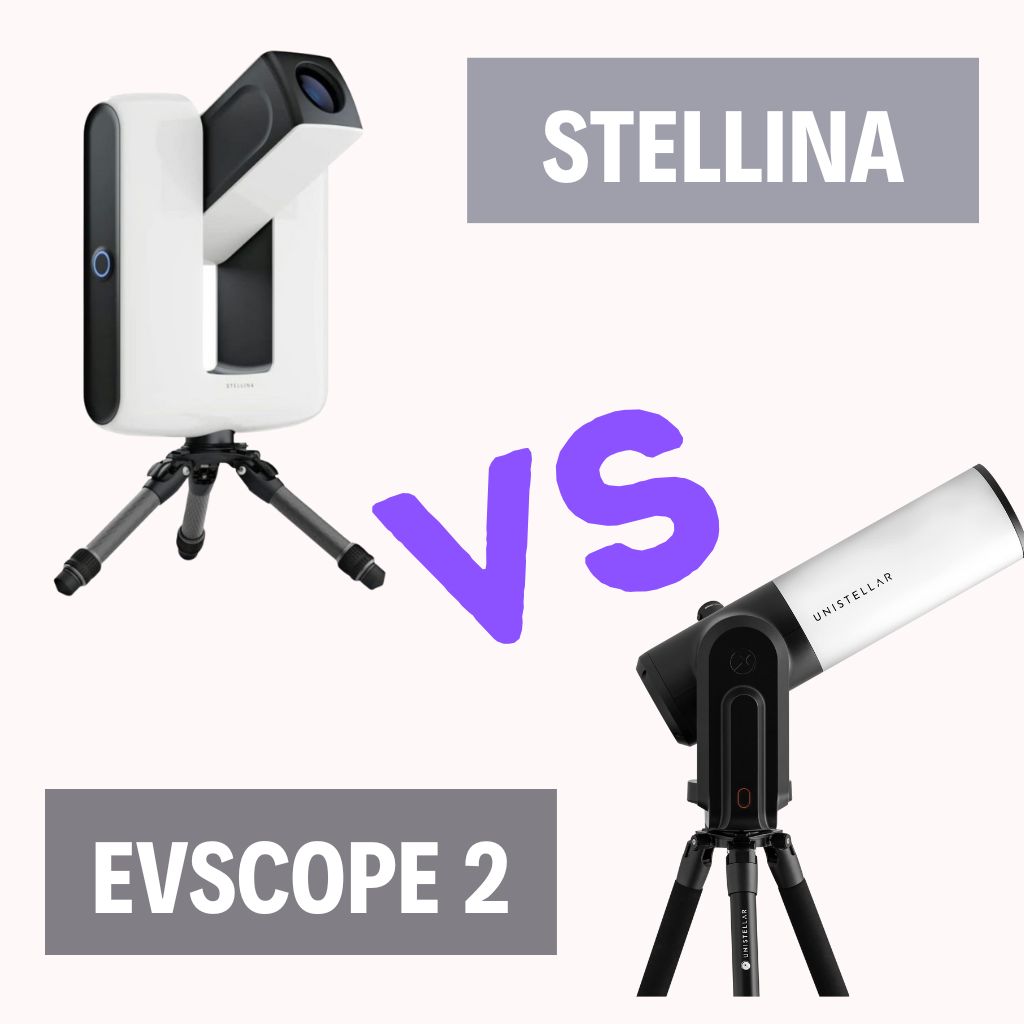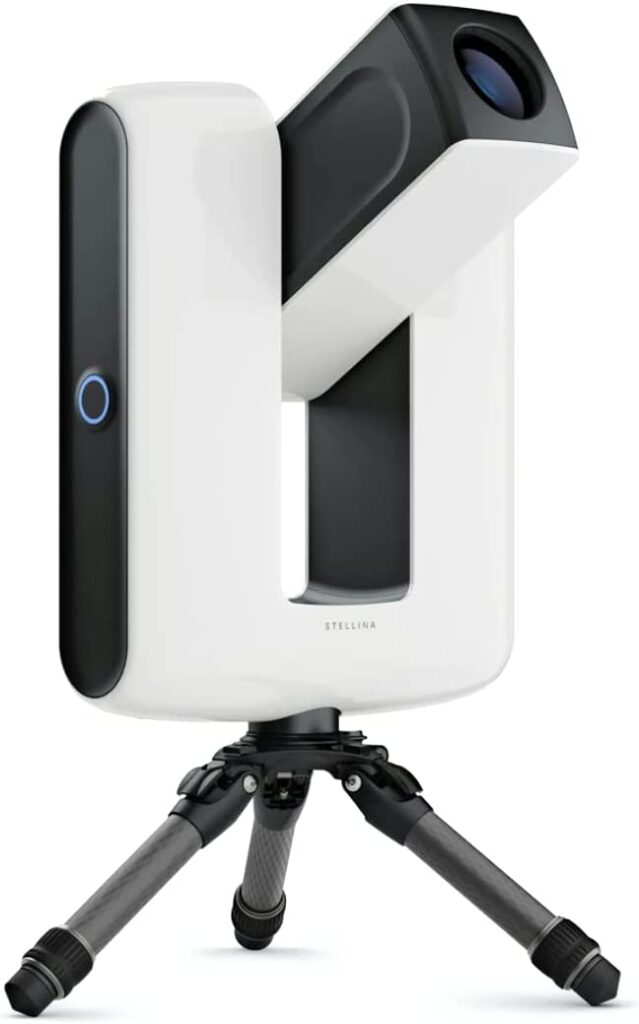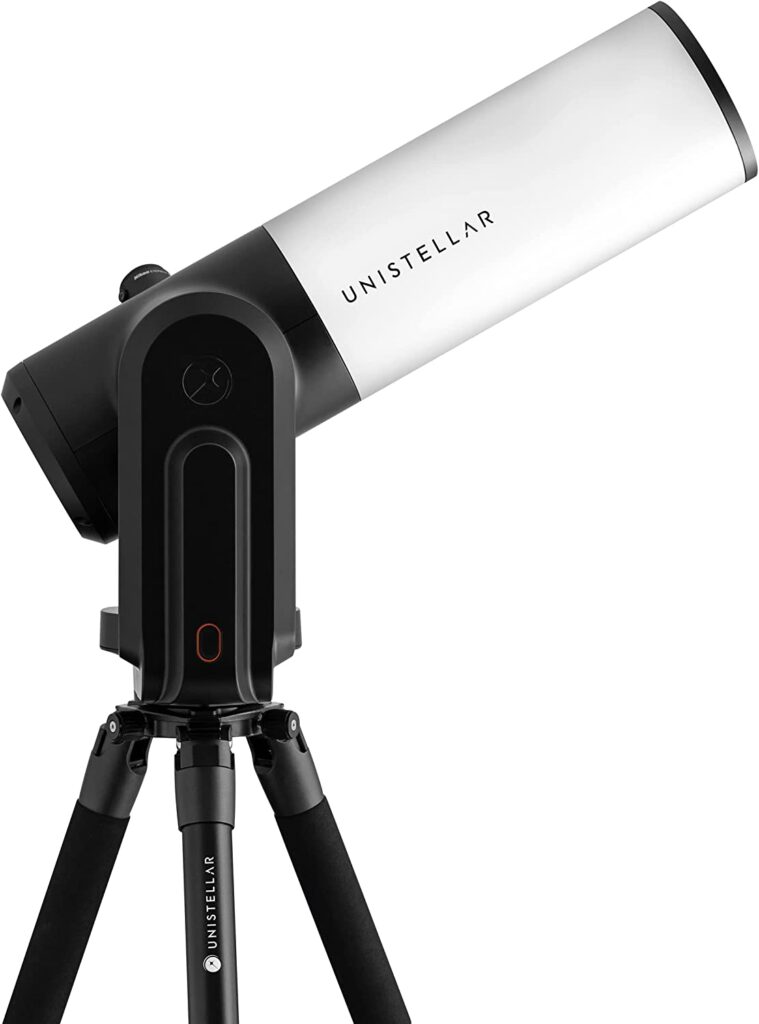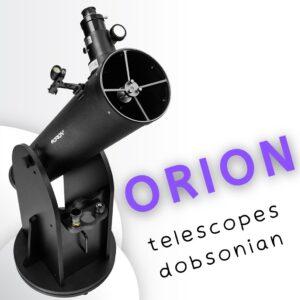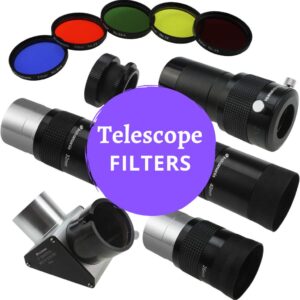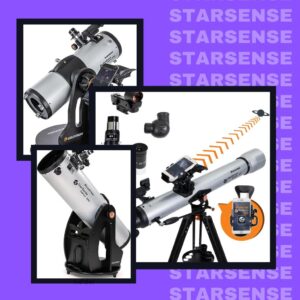This site contains affiliate links to products. I may receive a commission for purchases made through these links.
Smart telescopes have emerged as a popular choice for amateur astronomers and stargazers, offering a seamless and immersive stargazing experience. Among the leading contenders in this field are Stellina and eVscope 2, two next-generation smart telescopes that have garnered significant attention for their cutting-edge features and performance.
This article will provide a comprehensive breakdown and comparison of Stellina and eVscope 2, shedding light on their unique capabilities, design, and functionality.
Stellina vs eVscope 2: A brief overview
The Vaonis Stellina and Unistellar eVscope 2 are two of the most advanced and user-friendly smart telescopes on the market. Designed with advanced technology, these devices aim to transform the way we explore the night sky.
Stellina is an entirely automated observatory offering a streamlined experience for beginners and experienced stargazers alike. Its fully automatic tracking, autofocus, integrated dew heater, and light pollution filter deliver clear images of celestial objects.
On the other hand, Unistellar’s eVscope 2 is known for its extraordinary visual experience, offering an electronic eyepiece with a 7.7Mpx enhanced image resolution. It comes with features like smart light pollution reduction, autonomous field detection, a dedicated app, and a robust onboard computer for image storage.
While both offer impressive features for sky-gazing enthusiasts, there are differences between the two that make each more suitable for certain user needs and preferences.
Stellina vs eVscope 2, what are the key differences?
When considering the Stellina vs eVscope 2, several unique aspects distinguish these two leading smart telescopes. Let’s dissect some of the key differences that might influence your choice:
eVscope 2 has smart light pollution reduction technology, while Stellina comes with a light pollution filter
In the fight against light pollution, both Stellina and eVscope 2 offer innovative solutions. Stellina incorporates a light pollution filter, which helps users observe deep-sky objects even in urban areas. This functionality, however, may not eliminate the effects of intense city lights.
In contrast, eVscope 2 pushes the envelope with its smart light pollution reduction technology. This advanced feature uses patented algorithms to significantly reduce the effects of light pollution, providing crisp, clear views of celestial objects in detail, even under heavily lit conditions.
Stellina uses autofocus, while eVscope 2 utilizes a Nikon-designed eyepiece
Stellina has incorporated autofocus, a first in the field, which eliminates the need for manual intervention. In contrast, the eVscope 2 focuses more on delivering an enhanced visual experience through a high-quality Nikon eyepiece.
eVscope 2 has a larger aperture compared to the Stellina telescope
The Stellina telescope comes with an 80mm aperture. This aperture size is substantial enough to provide clear and bright images, making it suitable for observing a variety of celestial objects.
In contrast, the eVscope 2 has a larger 114mm aperture. This larger aperture enables the eVscope 2 to gather more light, enhancing the brightness and detail of the observed objects. The increased light-gathering power makes the eVscope 2 particularly adept at observing faint deep sky objects, such as distant galaxies and nebulae.
eVscope 2 offers a higher level of autonomy than Stellina
Both telescopes showcase advanced autonomous features, but there are differences in their approach.
Stellina utilizes a user-friendly smartphone app that assists users in identifying and tracking astronomical objects, making the night sky easier to navigate. However, it largely depends on the user’s input for selecting and tracking objects.
The eVscope 2, on the other hand, offers unprecedented autonomy with its autonomous field detection. The system instantly recognizes objects in its field of view by comparing them to a vast database of star coordinates.
This feature makes it arguably the most user-friendly telescope, significantly reducing setup time and making stargazing more intuitive and accessible to all users, regardless of their experience level.
Stellina maintains clearer views in humid environments than eVscope 2
Stellina incorporates dew heater technology, allowing optimal observation conditions for the lens. This feature is unavailable in the eVscope 2, giving Stellina an edge in maintaining clear views in more humid environments.
eVscope 2 has a longer focal length than Stellina
The Stellina features a 400mm focal length. This is a versatile focal length that provides a wide field of view for observing larger celestial objects and offering sufficient magnification for smaller, more distant objects.
The eVscope 2, on the other hand, has a slightly longer focal length of 450mm. This provides a bit more magnification power, which can be beneficial when observing smaller celestial objects or details on larger objects. However, this would come at the expense of a slightly narrower field of view compared to the Stellina.
Overview of the Stellina Telescope
Stellina has revolutionized the field of amateur and professional astronomy with its exceptional combination of features. Developed by Vaonis, the Stellina telescope is recognized for its advanced optics, user-friendly design, integrated camera, and smart capabilities.
It offers a blend of portability and technology, making it an attractive choice for those wishing to explore the night sky. Known for its innovative features and exceptional performance, the Stellina telescope is widely regarded as the best smart telescope available for astronomy enthusiasts.
What can you see with the Stellina?
Stellina allows you to dive into the universe’s wonders, capturing images of a wide range of celestial objects. The powerful smart telescope can observe deep-sky objects like distant galaxies, nebulae, and star clusters. Its robust focal length and focal ratio enable it to capture detailed images, making the elusive cosmos more accessible than ever before.
Can I view planets with Stellina?
You can view planets with the Stellina telescope. Although it excels in capturing deep-sky objects, it can also observe planets in our solar system.
However, due to its design focus on astrophotography and capturing faint, distant objects, views of planets might not be as detailed as those provided by some other telescopes explicitly designed for planetary viewing.
Is the Stellina suitable for beginners?
The Stellina telescope has been designed with beginners in mind. Its user-friendly design and intuitive smartphone app make it straightforward to use, even for those with little to no experience in astronomy.
The app assists users in identifying and tracking astronomical objects, making stargazing an accessible hobby for everyone.
Is the Stellina good for astrophotography?
The Stellina stands out as a strong contender in the world of astrophotography. With its built-in camera, Stellina can capture incredible images of celestial objects.
The light pollution filter further enhances its astrophotography capabilities, allowing you to capture stunning images even from light-polluted urban areas.
Pros of the Stellina
- Portability. One of the main advantages of the Stellina telescope is its portability. The sleek, compact design makes it easy to transport, making stargazing possible from virtually anywhere.
- User-friendly interface. The Stellina scores high on user-friendliness. Its intuitive app-based interface makes it easy for anyone to explore the cosmos, regardless of their experience level.
- Advanced observation of deep-sky objects. The Stellina telescope excels in capturing and observing deep-sky objects like galaxies, clusters, and nebulae, providing an immersive experience for astronomy enthusiasts.
- Good image quality. Equipped with advanced optics, the Stellina telescope delivers high-quality imaging, capturing intricate details of celestial objects. Users can enjoy crisp visuals and appreciate the beauty of the universe.
- Live sharing and collaboration. Stellina enables the live sharing of observations through its integrated Wi-Fi capabilities. Users can effortlessly share their celestial discoveries with friends, family, or fellow enthusiasts, fostering collaboration and engagement within the astronomy community.
Cons of the Stellina
- High price point. The Stellina’s advanced features come with a high price tag. This might deter amateur astronomers or those on a budget from opting for this smart telescope.
- Limited versatility for observing planets. Due to its smaller focal length of 400mm, the Stellina telescope may not provide optimal results when observing planets. Its design and specifications are primarily focused on deep-sky objects.
- The absence of a wide-field view for capturing expansive portions of the night sky. One limitation of the Stellina telescope is the absence of a wide-field view. A wide-field view allows astronomers to capture larger portions of the night sky, making it ideal for capturing expansive celestial phenomena like star fields, meteor showers, and panoramic views.
- Dependency on a stable internet connection for certain features. The Stellina telescope leverages advanced technology and connectivity to offer features such as live sharing, remote control, and automatic updates. While these internet-dependent features can enhance the user experience and facilitate collaboration, they also introduce a potential drawback. This dependency on internet connectivity may impact the availability and functionality of certain Stellina features, particularly when attempting to share observations in real-time or access remote control capabilities.
Features of the Stellina
The Stellina telescope is packed with a range of impressive features that cater to the needs of astronomy enthusiasts. Let’s explore the notable features of the Stellina telescope and discover how they contribute to an immersive and rewarding journey.
Automated pointing & tracking
With its advanced Go-To technology, Stellina automatically navigates and tracks celestial objects, offsetting the Earth’s rotation. The entire process of pointing and tracking is entirely hands-free and automated, simplifying your stargazing experience.
80mm aperture
The Stellina telescope is equipped with an 80mm aperture and an f/5 ED (Extra-Low Dispersion) refractor. The aperture size determines the amount of light the telescope can gather, which directly impacts the image’s brightness and clarity. With its 80mm aperture, the Stellina can capture sufficient light for detailed observations of celestial objects, providing sharp and vibrant images.
400mm focal length
The Stellina telescope has a focal length of 400mm which strikes a balance between magnification and a wider field of view, offering a versatile viewing experience for various types of celestial observations.
6.4 megapixels camera resolution
The Stellina telescope incorporates a high-resolution camera with a resolution of 6.4 megapixels. This resolution allows for impressive visual experiences and the ability to capture stunning astronomical photographs.
25mm eyepiece focal length
The Stellina telescope comes with an eyepiece focal length of 25mm, providing a magnification of 48x. This eyepiece focal length balances a broader field of view and higher magnification, accommodating various observing preferences.
Built-in camera
Stellina’s integrated camera sets it apart from many traditional telescopes, offering users the ability to capture and share their astronomical observations.
Light pollution filter
The built-in light pollution filter allows users to observe deep-sky objects even from city locations, thereby expanding the possibilities for urban astronomers.
High-quality optics
The Stellina telescope is known for its high-quality optics, providing detailed images of celestial objects. It enhances the stargazing experience, enabling users to explore the cosmos in detail.
Autofocus
Stellina revolutionizes the field by introducing autofocus, making it the first telescope device to incorporate this feature. With autofocus, users no longer need to manually adjust the focus, resulting in a more convenient and hassle-free observing experience.
Dew heater technology
The Stellina telescope integrates dew heater technology, which ensures optimal observation conditions for the lens. The dew heater feature helps maintain clear and unobstructed views, particularly in humid or cold environments by preventing the formation of dew or condensation on the lens.
WiFi connectivity
One area where Stellina outshines other smart telescopes is connectivity. It supports Wi-Fi connectivity, allowing up to 20 smartphones or tablets equipped with the Singularity app to connect simultaneously.
Overview of the eVscope 2
In the arena of smart telescopes, the eVscope 2 is a formidable contender. Developed by Unistellar, it pairs cutting-edge technology with practicality, transforming the experience of observing the night sky.
This electronic telescope is remarkable for its enhanced image resolution, smart light pollution reduction, and impressive battery life. The eVscope 2 aims to bring the wonders of the cosmos within reach of amateur and professional astronomers.
What can you see with the eVscope 2?
The eVscope 2 excels in unveiling the beauty of deep-space objects. Equipped with a high-resolution electronic eyepiece, it can capture detailed images of distant galaxies, nebulae, and star clusters. The patented algorithms for smart light pollution reduction allow for clearer and more detailed observation of distant celestial objects, even under light-polluted skies.
Can I view planets with Unistellar eVscope 2?
You can view planets with the Unistellar eVscope 2. While the eVscope 2 shines when it comes to observing deep-sky objects, it also provides visibility of planets within our solar system. However, it’s worth noting that the telescope’s specific design might not provide as detailed views of planets as a telescope specifically optimized for planetary observation.
Is the eVscope 2 suitable for beginners?
The eVscope 2 is a fantastic choice for beginners. The system’s autonomous field detection makes it one of the most user-friendly telescopes on the market.
It automatically recognizes objects within its field of view, making it easy to use even for those new to stargazing. Coupled with the dedicated app’s guidance, it makes the exploration of the night sky accessible and enjoyable.
Is the eVscope 2 good for astrophotography?
The Unistellar eVscope 2 is an enjoyable camera telescope that simplifies astrophotography, but its image quality may not meet high expectations.
However, it should be noted that options are somewhat limited because the camera only features an electronic eyepiece, which means no adjustments to magnification or the use of Barlow lenses. Nonetheless, the eVscope 2 is exceptionally close to being the ideal choice for aspiring astrophotographers in all other aspects.
Pros of the eVscope 2
- High-resolution imaging. The eVscope 2’s high-resolution imaging is a standout feature. The telescope delivers a level of detail and clarity that is unrivaled, making it one of the most powerful smart telescopes available.
- Advanced light pollution reduction. The smart light pollution reduction algorithm, unique to Unistellar, allows the eVscope 2 to offer crisp and clear views even under light-polluted city skies.
- User-friendly design. With its autonomous field detection, the eVscope 2 provides an extremely user-friendly experience, making it an ideal telescope for beginners or those looking for hassle-free stargazing.
Cons of the eVscope 2
- High price point. Similar to Stellina, the advanced features and high performance of the eVscope 2 come at a high cost. This price might not be accessible to everyone, particularly those new to astronomy or on a budget.
- Requires a stable internet connection. For the most accurate observations and tracking, the eVscope 2 requires a stable internet connection, which may not be available in some remote observing locations.
Features of the eVscope 2
The eVscope 2 comes with important features such as:
Reflector optical design
The eVscope 2 utilizes a reflector optical design. A reflector telescope uses a curved primary mirror to gather and focus light, resulting in high-quality images. This design is known for its effectiveness in capturing celestial objects and providing clear and detailed views.
114mm aperture
With a generous aperture of 114 mm, the eVscope 2 allows for effective light collection. A larger aperture enables the telescope to gather more light, resulting in brighter and more detailed observations of celestial objects.
450mm focal length
The eVscope 2 has a focal length of 450mm which offers a balance between magnification and a wider field of view.
f/3.9 focal ratio
The eVscope 2 has a fast focal ratio of f/3.9. The focal ratio is a measure of how “fast” or “slow” a telescope is, determining the brightness and field of view of the observed images. A lower focal ratio, such as f/3.9, allows for shorter exposure times, making it well-suited for astrophotography and capturing faint objects in the night sky.
Alt-azimuth mount
The eVscope 2 features an alt-azimuth mount. An alt-azimuth mount provides movement in two axes, allowing for easy and intuitive tracking of celestial objects.
Autonomous field detection
The eVscope 2’s autonomous field detection allows the telescope to recognize objects in its field of view, making it incredibly user-friendly and simplifying the stargazing experience.
Smart light pollution reduction
The eVscope 2’s smart light pollution reduction algorithms allow for clear and detailed observation of distant celestial objects, even in light-polluted areas, making it an excellent choice for urban astronomers.
Dedicated app
The eVscope 2’s dedicated app recommends the most interesting targets to view and assists in identifying and learning about cosmic objects, enriching the overall stargazing experience.
On-board computer with 35h of observation storage capacity
The eVscope 2 comes equipped with a powerful onboard computer that provides up to 35 hours of observation storage capacity. This means that your observations, including the high-quality images you capture, can be stored directly on the device. This feature is particularly useful for those who wish to review or share their astronomical observations later.
Nikon designed eyepiece
The eVscope 2 uses an eyepiece designed by Nikon, a brand renowned for its camera and optical technology. This eyepiece allows for an impressive amount of zoom ability and provides an observing comfort that enhances the visual experience.
Unistellar network membership
When you purchase the eVscope 2, you automatically become a member of the Unistellar Network. This network connects users from around the world, allowing you to share your observations and learn from the experiences of other members.
Sturdy tripod
The eVscope 2 comes with a sturdy tripod that provides a stable platform for your observations. It features extendable legs that can be adjusted to your desired height, as well as an integrated level to ensure the setup is perfectly balanced. This guarantees a steady and unobstructed view of the night sky.
Built-in battery
The eVscope 2 has a built-in battery that offers up to 10 hours of operation on a single charge. This allows for extended observation sessions without worrying about running out of power.
Stellina vs eVscope 2: Which is a more powerful smart telescope?
Both Stellina and eVscope 2 are among the best smart telescopes on the market. They offer advanced features designed to enhance your stargazing experience.
When it comes to power, the eVscope 2 and Stellina both bring a lot to the table, but there are some key differences to consider.
The eVscope 2 has a larger aperture of 114mm compared to Stellina’s 80mm. A larger aperture means the telescope can gather more light, which translates to brighter and more detailed observations of celestial objects.
This becomes particularly relevant when observing deep sky objects, as these are often faint and require a telescope that can gather ample light.
In terms of focal length, the eVscope 2 has a slight advantage, with 450mm compared to Stellina’s 400mm. This means the eVscope 2 can provide slightly higher magnification, assuming the same eyepiece is used with both telescopes.
Stellina does offer a respectable 6.4-megapixel camera resolution which is great for capturing detailed astronomical photographs. The eVscope 2’s camera resolution isn’t stated, but with its larger aperture, it’s safe to assume that it can capture high-quality images, particularly of faint deep sky objects.
Taking these features into account, one could argue that the eVscope 2 is more powerful, particularly if you’re interested in deep sky observing or astrophotography, due to its larger aperture and faster focal ratio.
However, the Stellina is also a formidable smart telescope with its 6.4-megapixel camera resolution and should not be overlooked, particularly for those looking for high-resolution astrophotography.
Stellina vs eVscope 2: Which one’s for you?
If you’re into astrophotography and wish to capture highly detailed images, you might lean towards the Stellina. It’s equipped with a high-resolution 6.4-megapixel camera and has a focal length of 400mm, enabling it to capture sharp, vibrant images of celestial objects.
The incorporated autofocus, light pollution filter, and dew heater make it a well-rounded choice for stargazers who wish to capture the beauty of the night sky in high-definition photographs.
On the other hand, if your interest lies in observing a wide array of celestial objects with maximum detail and brightness, the eVscope 2 could be your best bet.
With its larger aperture of 114mm and a longer focal length of 450mm, this telescope is primed for deep sky observations, offering bright, detailed views of distant galaxies, nebulae, and star clusters.
The eVscope 2 also shines with its innovative features like integrated intelligent image processing and light pollution reduction, a dedicated app with a catalog of over 5000 objects, and the ability to contribute to space science through the Unistellar Network.
For beginners, both telescopes offer highly user-friendly experiences, featuring automated tracking and pointing, along with quick setup times. The Stellina’s automatic focusing system and eVscope 2’s electronic eyepiece provide added convenience, making both of these smart telescopes great choices for those new to astronomy.
FAQs about smart telescopes
Let’s address some frequently asked questions.
Can the Stellina and eVscope 2 telescopes be controlled remotely?
Both Stellina and eVscope 2 telescopes can be controlled remotely using their respective dedicated smartphone apps.
What is the Warranty offered for Stellina and eVscope 2?
Both Stellina and eVscope 2 come with a manufacturer’s warranty of two years, providing customers with peace of mind and support for their telescopes. This warranty ensures that any manufacturing defects or malfunctions occurring within the specified period will be addressed by the respective manufacturers.
Vespera vs Stellina, which is better?
Vespera, like Stellina, is a smart telescope designed for ease of use and portability, making it a great option for beginners or those who want a convenient, travel-friendly telescope. However, Stellina offers more advanced features, including a larger aperture and a higher resolution camera, making it better suited for more serious amateur astronomers or astrophotography enthusiasts.
Can you take high-quality pictures with Stellina/Vespera and eVscope/Equinox?
You can take high-quality pictures with both the Stellina/Vespera and eVscope/Equinox telescopes. Both Stellina and eVscope 2 come equipped with high-resolution cameras capable of capturing detailed and stunning astronomical photographs. However, for more professional-grade astrophotography, the Stellina and eVscope 2 would generally outperform the Vespera and Equinox due to their larger apertures and higher camera resolutions.
What are the key differences between Stellina and eVscope Equinox?
Both Stellina and eVscope Equinox are advanced smart telescopes, yet they have notable differences. Stellina offers a sleek design and user-friendly experience with its automated pointing, tracking, and autofocus. It has an 80mm aperture and a high-resolution camera of 6.4 megapixels. On the other hand, eVscope Equinox provides higher light-gathering ability with a larger 114mm aperture, and it’s renowned for its autonomous field detection, allowing for accurate tracking and pointing.
Takeaway: Stellina and eVscope 2 offer unique features and capabilities
Both the Stellina and eVscope 2 are powerful smart telescopes that deliver high-quality observations of the night sky. The Stellina excels with its portability, user-friendly design, and excellent astrophotography capabilities.
Stellina’s advanced technology allows it to capture images of celestial objects with remarkable clarity and detail.
The eVscope 2 tops with its high-resolution imaging, advanced light pollution reduction, and user-friendly features such as autonomous field detection. With its impressive specifications and capabilities, the eVscope 2 stands out as the most powerful smart telescope in its class.
The digital telescope revolutionizes the way we observe and explore the cosmos, providing a seamless and immersive experience through its digital imaging capabilities.
Don’t forget to subscribe to our newsletter where you’ll find the latest cosmic discoveries, expert stargazing tips, and exclusive subscriber deals. Embark on your cosmic journey if you haven’t already!
You may also like:

